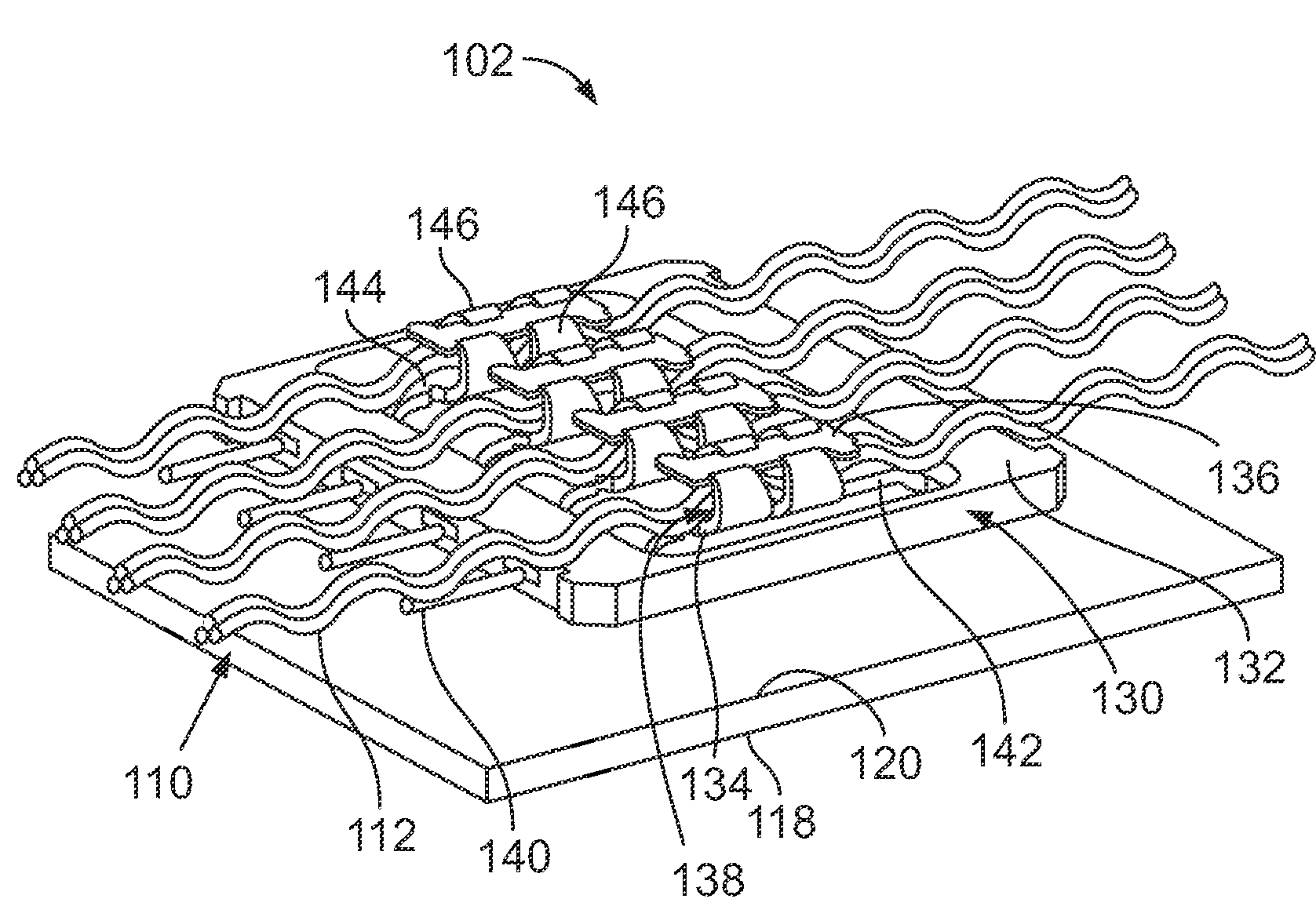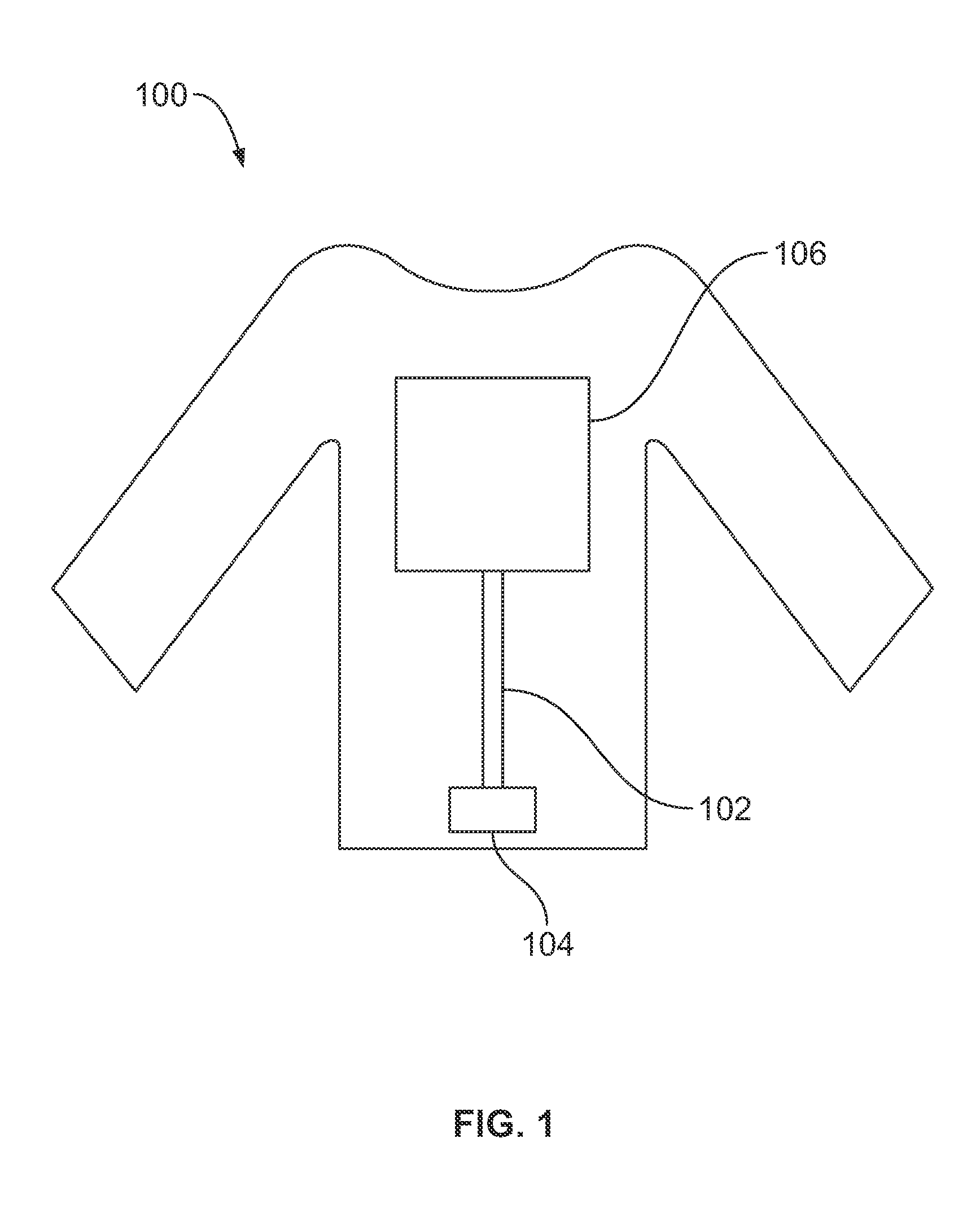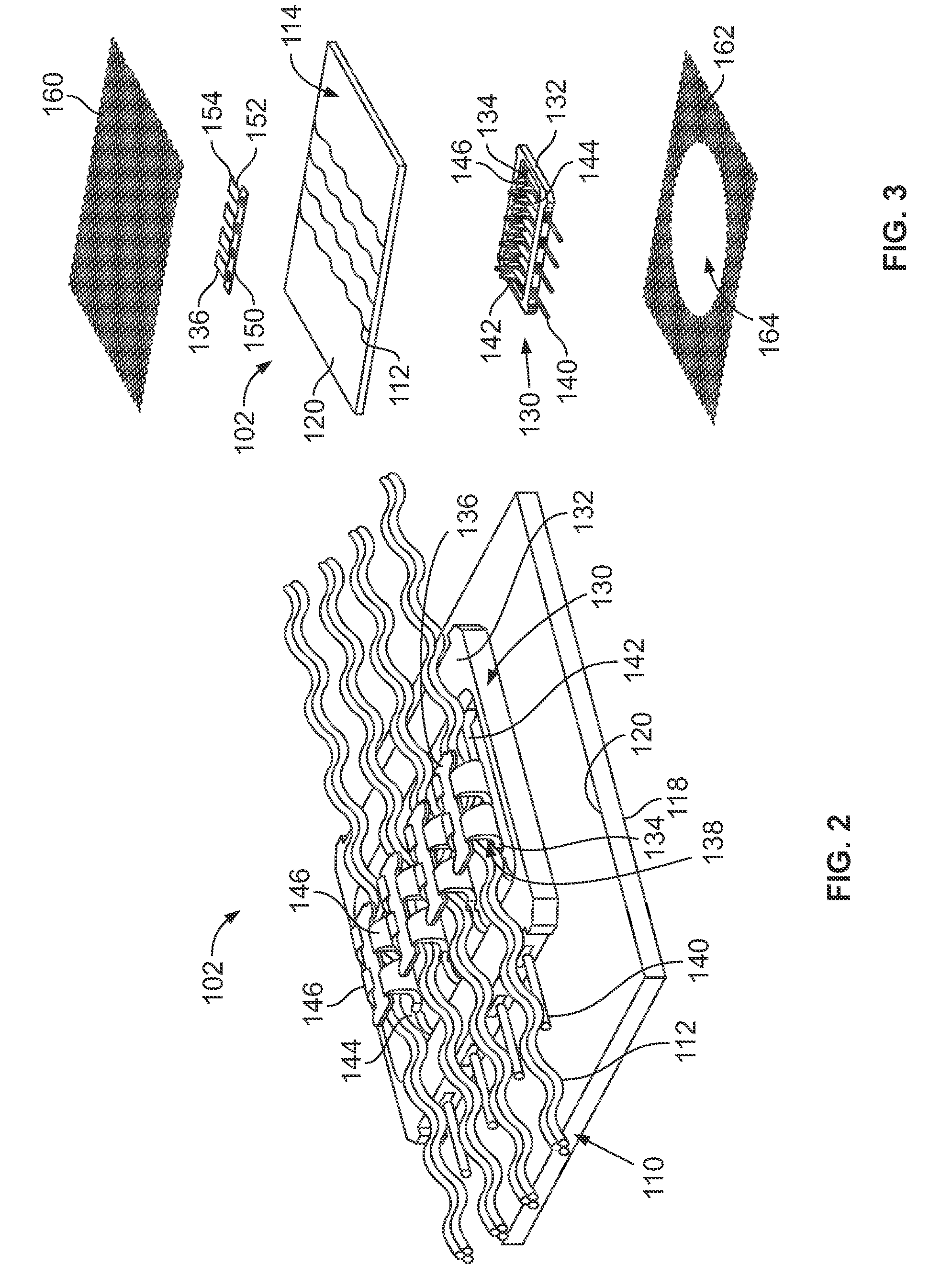Interconnect and termination methodology for e-textiles
a technology of electronic textiles and termination methods, applied in the direction of coupling contact members, coupling device connections, electric discharge lamps, etc., can solve the problems of difficult stripping of un-insulated conductive fibers from the surrounding and the woven fabric's insulative material cannot withstand the high temperature of soldering, so as to achieve more reliable connection in terms of electrical conductivity and/or strength
- Summary
- Abstract
- Description
- Claims
- Application Information
AI Technical Summary
Benefits of technology
Problems solved by technology
Method used
Image
Examples
Embodiment Construction
[0021]FIG. 1 illustrates a wearable article 100, such as a garment, that incorporates an electronic textile (e-textile) 102 therein. The e-textile 102 includes fabrics that enable computing, digital components and / or electronics to be embedded therein. The e-textile 102 provides the wearable article 100 with wearable technology that allow for the incorporation of built-in technological elements into the fabric of the garment. The wearable article 100 may constitute intelligent clothing or smart clothing.
[0022]The e-textile 102 extends between a first electronic device 104 and a second electronic device 106. Any number of electronic devices may be utilized with the wearable article 100. In an exemplary embodiment, the first electronic device 104 constitutes a battery pack and the second electronic device 106 constitutes an LED array that may be powered by the battery pack. Other types of electronic devices may be incorporated into the wearable article 100 in alternative embodiments, ...
PUM
 Login to View More
Login to View More Abstract
Description
Claims
Application Information
 Login to View More
Login to View More - R&D
- Intellectual Property
- Life Sciences
- Materials
- Tech Scout
- Unparalleled Data Quality
- Higher Quality Content
- 60% Fewer Hallucinations
Browse by: Latest US Patents, China's latest patents, Technical Efficacy Thesaurus, Application Domain, Technology Topic, Popular Technical Reports.
© 2025 PatSnap. All rights reserved.Legal|Privacy policy|Modern Slavery Act Transparency Statement|Sitemap|About US| Contact US: help@patsnap.com



